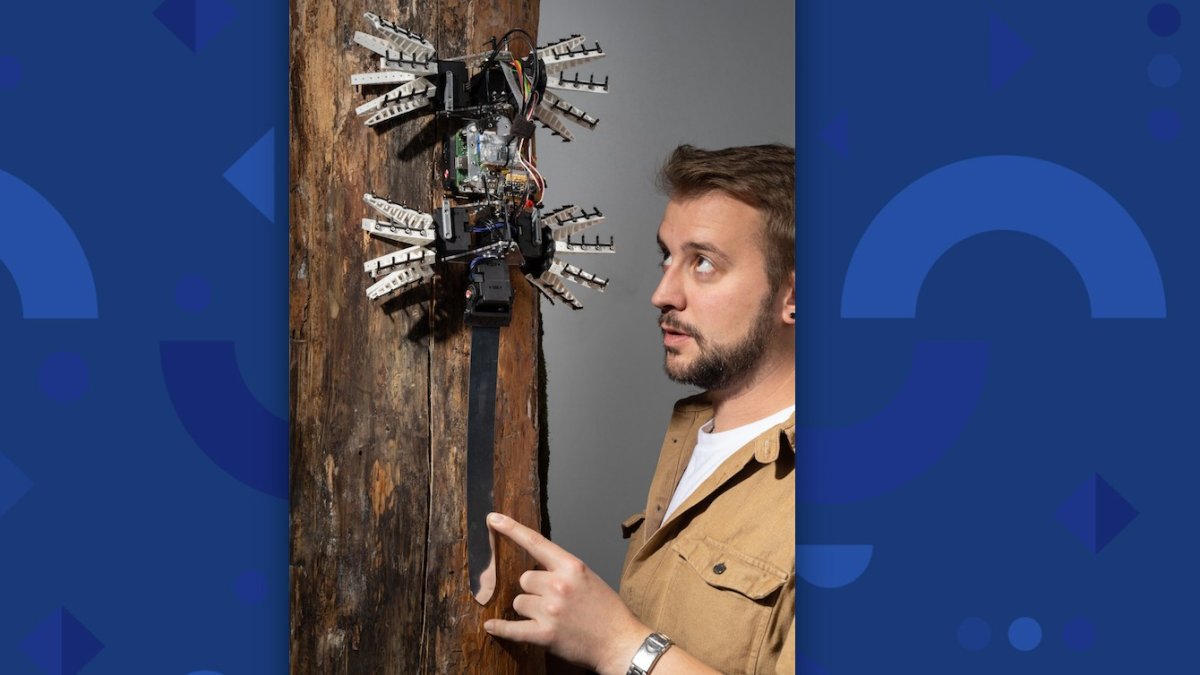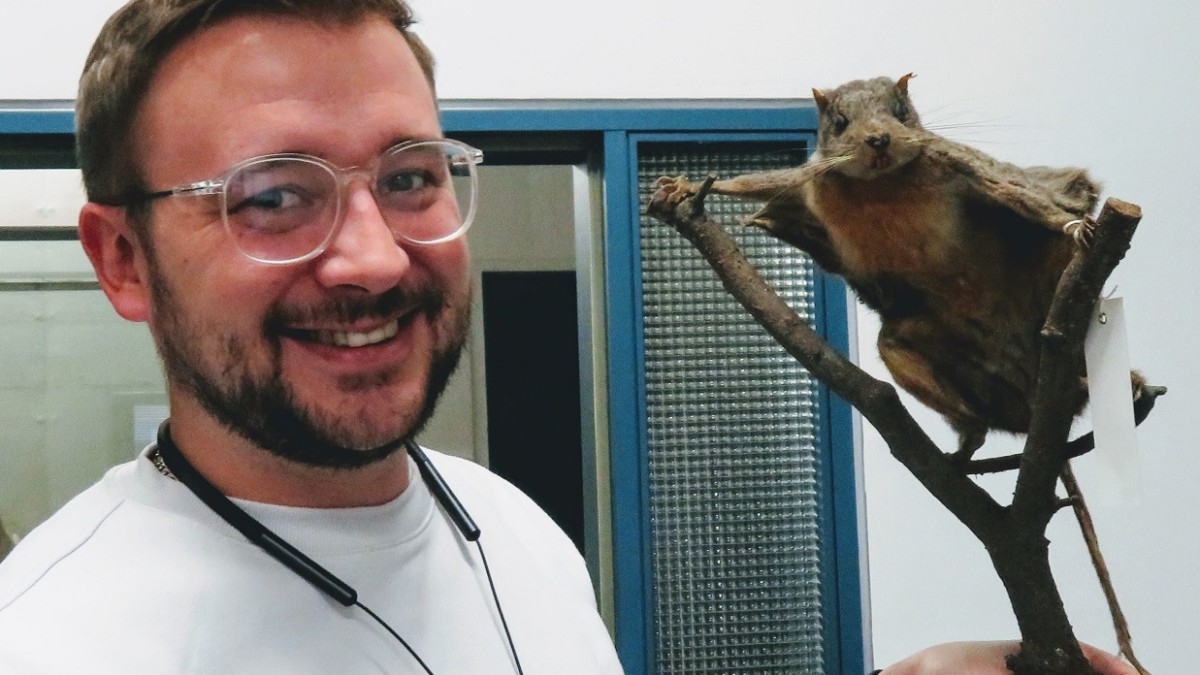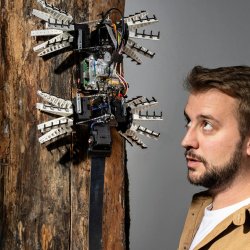Meet the academic: Dr Rob Siddall
Dr Rob Siddall, Lecturer in Robotics in the School of Mechanical Engineering Sciences, reveals why observing how animals move is key to robotics, and the exciting practical opportunities you’ll get to build robots at Surrey.
What do you teach at Surrey?
I teach the Practical Design course which runs throughout the second year for students on mechanical, aerospace, automotive and biomedical engineering degrees. First we give them a grounding in software tools and then they go into the workshop and design and build their own robot. This will be different depending on their course – for example our aerospace students make aircraft and we then take them to a local airfield to fly them while mechanical engineers create rovers and get to test them out on an assault course.
I also teach an electronics course where students get a kit to experiment with, and I supervise students’ final year projects – this year this has included a robotic flying squirrel, a magnetic fish tail and a burrowing robot.
Why should people come to Surrey to study mechanical engineering sciences?
Because there are so many chances to do hands-on engineering. This is absolutely vital: you learn aerodynamics much more quickly if you try to design an aircraft.
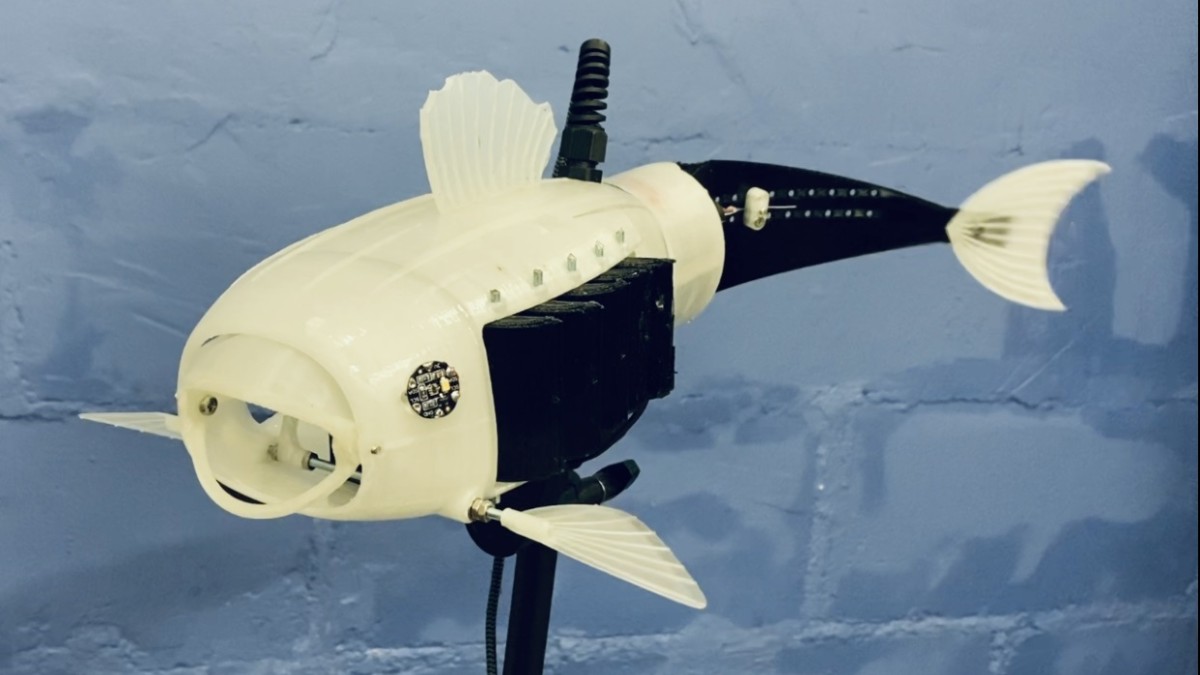
Eleanor Mackintosh's 'Robo-fish' samples and tracks microplastics in water.
One really exciting opportunity is our annual Natural Robotics Contest which we launch in early April. This year we’re challenging entrants to design robots that can help meet targets set at the COP15 UN Biodiversity Conference in 2022. It’s open to everyone and there’s no limit on what the robot can be: it can run, fly, be a robot tree even! Over the summer our judging panel will decide on the best design and turn it into a real working system. Last year’s winner was Surrey student Eleanor Mackintosh’s ‘Robo-fish’ which had the purpose of sampling and tracking microplastics in water – and is now an ongoing piece of robotics research.
What sparked your own interest in robotics?
I’ve always liked to make things. Having done a masters in aerospace engineering I began to study for a PhD in rocketry but it turned into a robotics PhD when I started developing an aircraft that could fly into water.
And how did you get into animal-inspired robotics?
There are obviously a lot of different creatures that move from flight to water so I spent a lot of time looking at animals when I was making my aquatic aircraft. After that I wanted to observe animals directly, so I accepted a fellowship at the Max Planck Institute to study the acrobatics of lizards in rainforests.
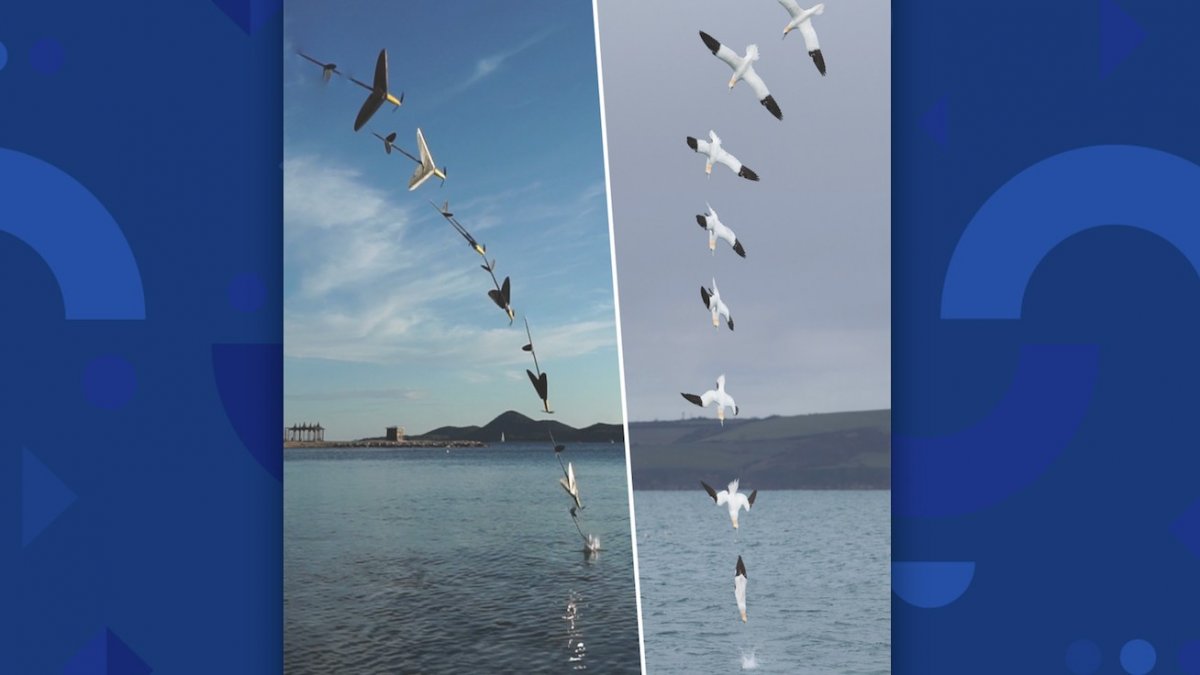
Rob studied birds that thrive and survive in air and water (right) to find inspiration for his aquatic aircraft (left)
What can animals teach us that’s useful for robotics?
The essential difference between an animal and a robot is that animals can deal with and adapt to change. You can put an animal in a new terrain and, generally, it’ll be fine. A robot can’t cope with too much change. It’s designed for a specific job in a specific environment. So if you can figure out the small tricks animals use to be good at gliding while also being good at running, climbing and swimming, we can use those in robotics.
What are you researching at the moment?
I’m looking at birds and how they function in tight spaces – what do they do when their wing hits an obstacle, and how do they slow down fast? This could inform how we design UAVs to become more agile and safer. I’m also working on developing a rover which can measure eco-systems, gathering data on how much carbon is sequestering in a forest, for example.
What do you do when you’re not researching or teaching?
Well, my partner and I have a one-year-old so that keeps me busy! We’ve started keeping chickens, to get a little more nature into our lives. And otherwise, I’m addicted to tinkering so I spend a lot of my free time playing with ideas that might one day become a reality.
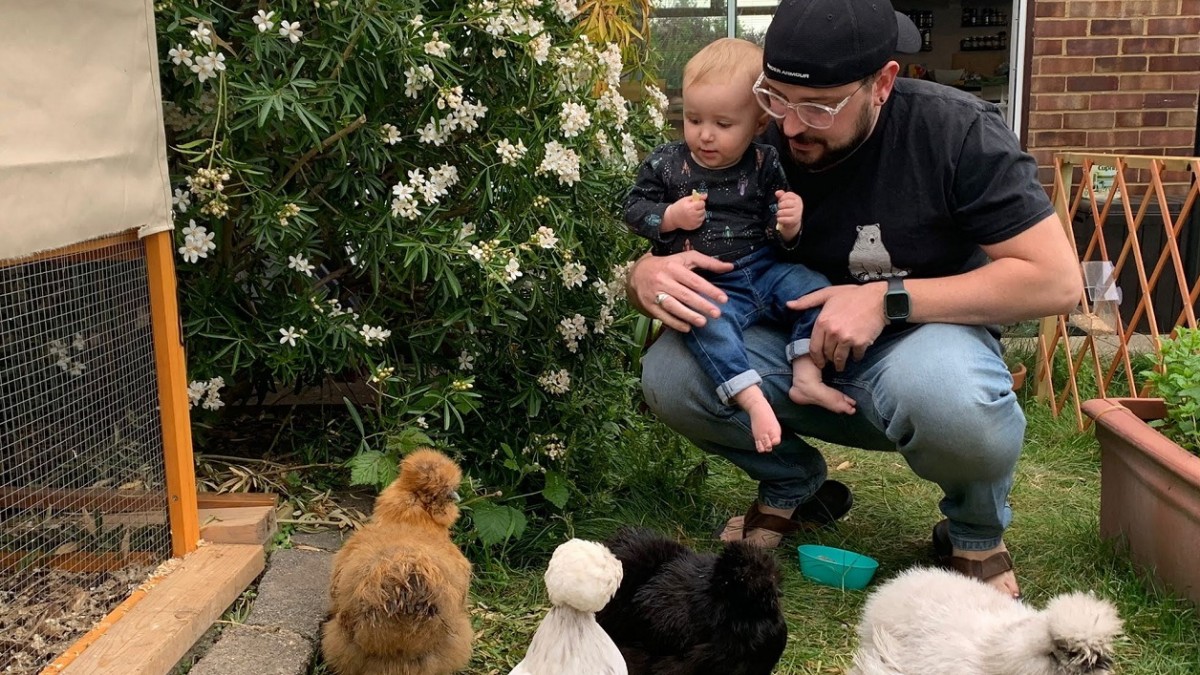
Rob and son observing their backyard chickens.
Find out more about entering the Natural Robotics Contest.
Discover our mechanical engineering including our BEng (Hons)/MEng Aerospace Engineering, Automotive Engineering, Biomedical Engineering and Mechanical Engineering.
